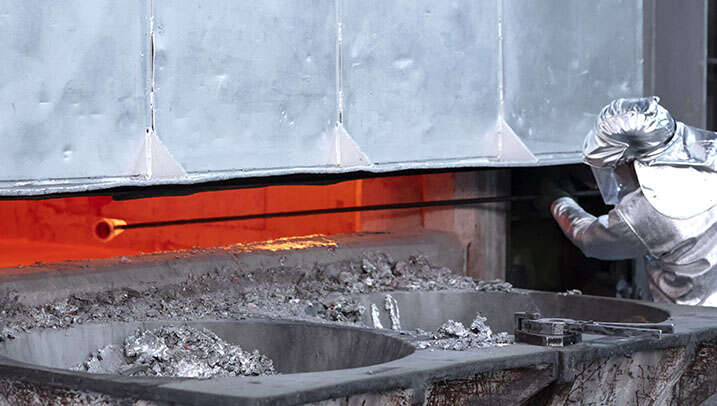Non-ferrous casting presents many unique challenges when verifying the melt to achieve the specification demanded by the grade. This is an issue that could become more widespread as time goes on as lightweight non-ferrous alloys, such as aluminum and magnesium, play a crucial role in reducing weight and cutting emissions in the automotive and aerospace industries. As in ferrous casting, OES is the method used to verify melt composition of aluminum, copper, zinc and magnesium alloys. However, it can often be a costly and complicated exercise to get the specification just right, with several attempts necessary before the right grade is achieved.
In this article, we’ll take a close look at the unique challenges posed by these non-ferrous alloys and why OES analysis needs to be undertaken carefully to get optimum results.

Some elements that are used to control the melt can be challenging to measure with OES, yet detecting their presence at low limits is essential. For example, hypereutectic Al-Si alloys use strontium and sodium modifiers. These modifiers are adversely affected by antimony, phosphorous and bismuth and these tramp elements plus calcium must not exceed 120ppm in total. If this level is exceeded, then the effect of adding modifiers is reduced and the final alloy will not have the right physical properties.
But, for some OES systems, these elements can be very tricky to measure at the low detection limits needed. This is sometimes because of calibration and measurement techniques. In other cases, it’s because the detection technology of the instrument is does not have the sensitivity required to resolve the dense spectral lines emitted by these elements.
Aluminum alloys and other non-ferrous based materials have a tendency to segregate as they solidify. This is a process of diffusion of trace elements towards the surface or grain boundaries as the melt cools, resulting in uneven concentrations of key elements. In a finished product, excess segregation may adversely affect the physical properties of the casted component, but for sampling the issue is with getting a representative result from the sample-taking verification process.
As segregation can extend in all directions within the sample, it can be very difficult to get a representative analysis result. Ways round this can include taking many samples and ensuring the sample size allows for natural variation and then take an average as the result. However, the best way to avoid the segregation issue completely is to ensure your process of taking a sample follows the right procedures. Absolute cleanliness, proper sample preparation and controlling cooling rates are examples of good practice to reduce segregation.
In our new guide Optimal non-ferrous melt control with spark OES, we discuss the above issues and give detailed explanations of what you must do to reduce segregation during sample taking and get reliable results first time.
On the 19th January 2021 you also get the chance to participate at a live webinar with our OES expert, who will explain to you indepth and give you pro tips on non-ferrous melt control. Book your space here.